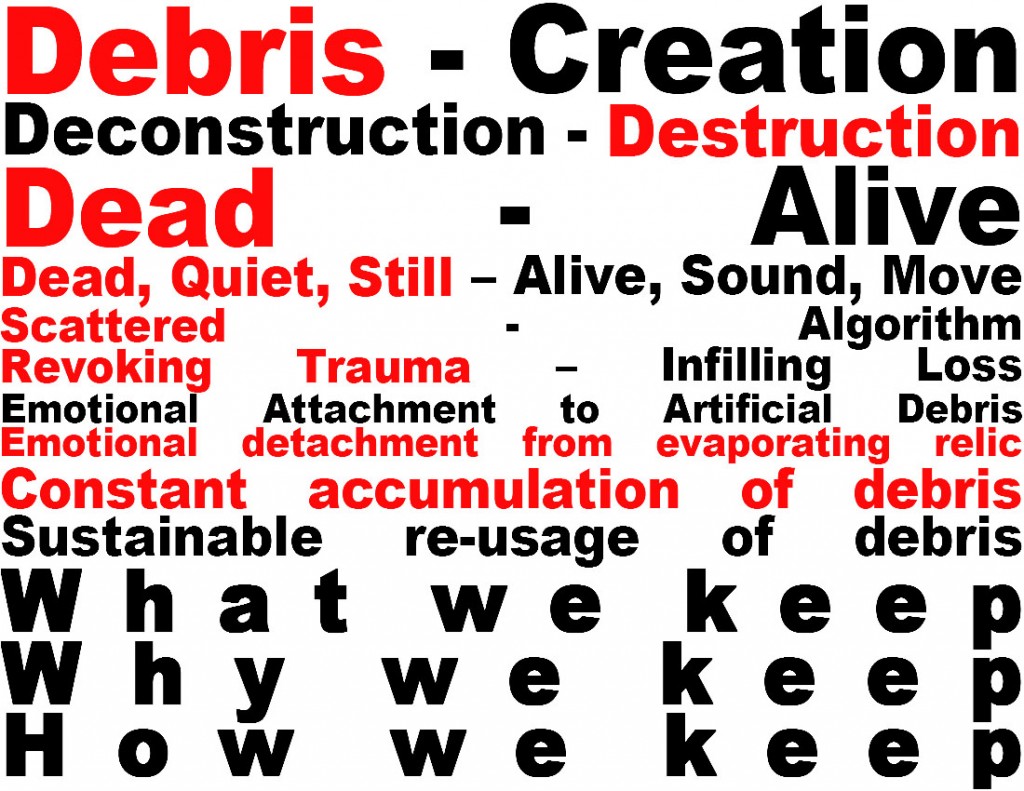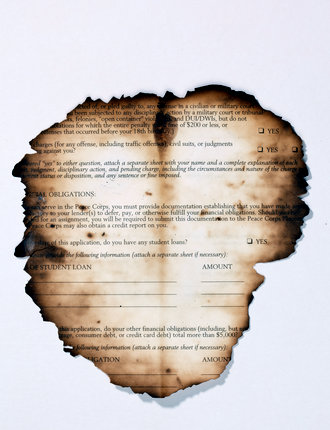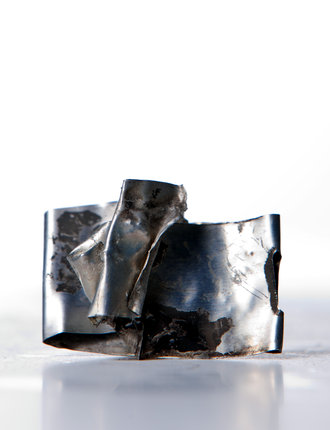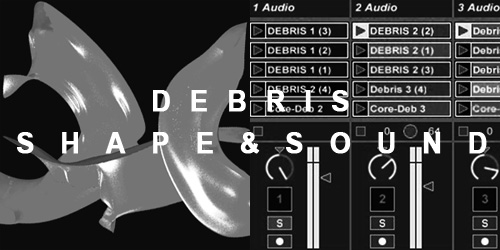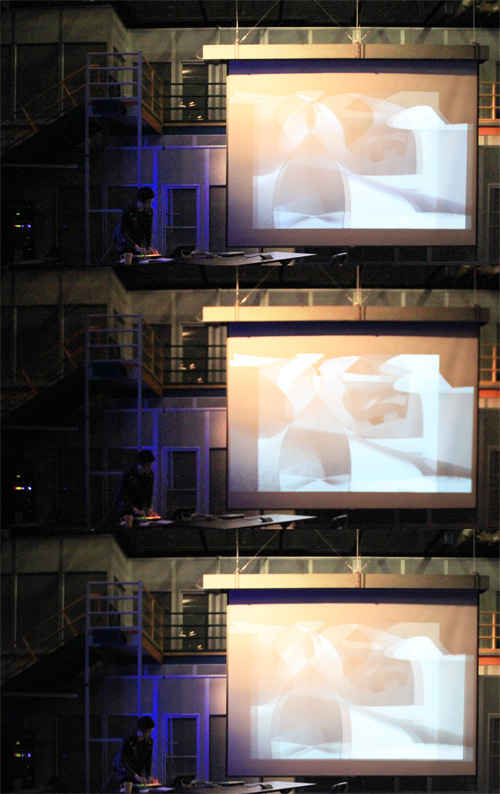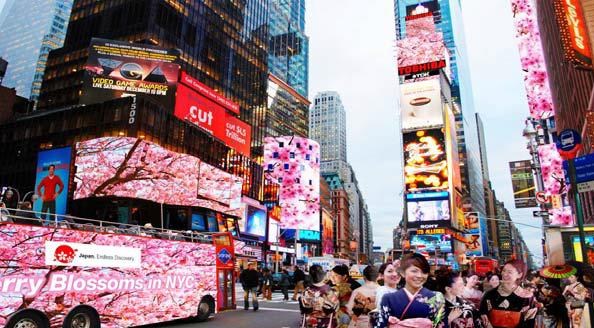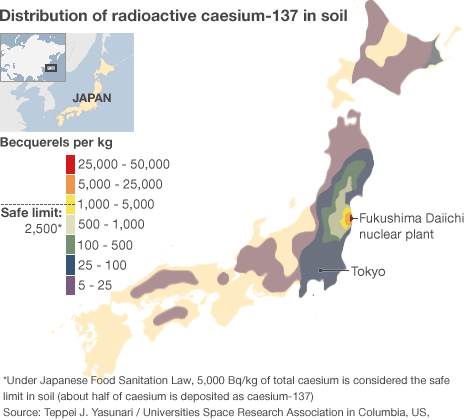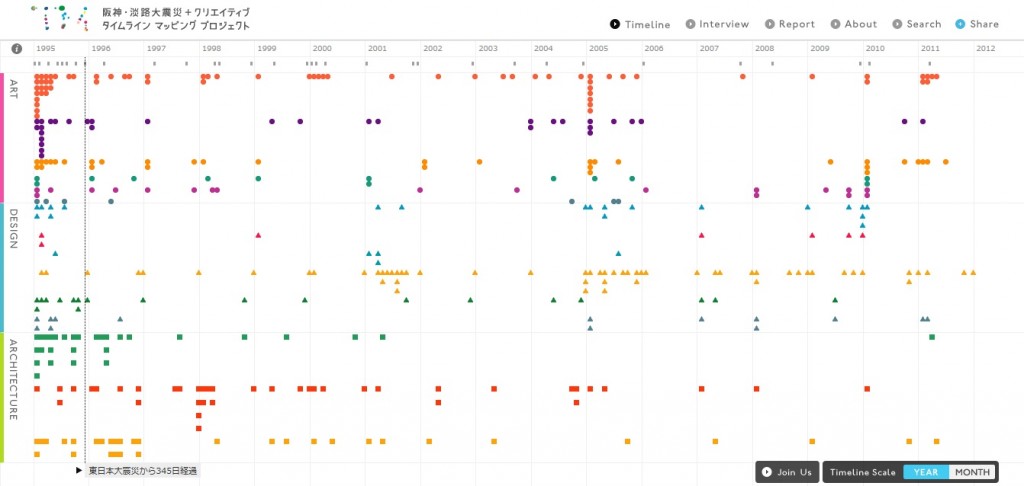Video Essay, 43′, 2005, Ursula Biemann
Black Sea Files is a territorial research on the Caspian oil geography: the world’s oldest oil extraction zone. A giant new subterranean pipeline traversing the Caucasus will soon pump Caspian Crude to the West. The line connecting the resource fringe with the terminal of the global high-tech oil circulation system, runs through the video like a central thread. However, the trajectory followed by the narrative is by no means a linear one. Circumventing the main players in the region, the video sheds light on a multitude of secondary sceneries. Oil workers, farmers, refugees and prostitutes who live along the pipeline come into profile and contribute to a wider human geography that displaces the singular and powerful signifying practices of oil corporations and oil politicians. Drawing on investigatory fi eldwork as practiced by anthropologists, journalists and secret intelligence agents, the Black Sea Files comment on artistic methods in the field and the ways in which information and visual intelligence is detected, circulated or withheld.
Debris – Creation
Deconstruction – Destruction
Dead – Alive
Dead, Quiet, Still – Alive, Sound, Move
What we keep – Why we keep – How we keep
Scattered – Algorithm
Revoking Trauma – Infilling Loss
Emotional Attachment to Artificial Debris – Emotional detachment from evaporating relic
Constant accumulation of debris – Sustainable re-usage of debris
The main point of my response is to making deconstruction structure by using debris of 3/11 Tsunami. To convert the debris from dead relics to alive sources, I am planning to put sound, movement, algorithm and stories of affected people into debris.
However, this process of debris is standing on a keen line. It could either revoke the trauma or infill the mental loss. I have to make a healing monument rather than hurting trash. Therefore, I am trying to figure out the reason why people build the monument after disasters and the reason why people keep remainders of their dead relatives and so on.
On September 8, 2011, The New York Times published an article, “What We Kept”, which was written about privately kept relics after 9/11. With the pictures of 22 mundane items, the stories of 22 people were published online.
Why do these people have kept these relics? What kind of relics do they have kept? And, how could we expand these relics and attached emotions in a creative and positive way?
Following pictures and stories are parts of articles.
“I was downtown when the planes hit the towers on Sept. 11. I walked back to Brooklyn over the bridge to where my family and I were living on Sackett Street near the waterfront in Cobble Hill. By the time I got home, the towers had fallen and our neighborhood was littered with papers and debris that had blown across the water from the towers. This is a piece of paper I picked up in the street in front of our house — a Peace Corps application burned around the edges.”
- Nicholas Arauz
“I was a New York City police officer and picked up a thin ribbon of metal from the site. I feel kind of dumb because it didn’t occur to me that there were others doing this kind of thing. I didn’t want a ‘souvenir,’ but I wanted something tactile just so I knew it really happened. I like that it is just a piece of scrap to anyone who sees it, not that I display it. I try not to think about it most of the time and something tells me I’m not going to enjoy reading about what others kept, but thank you for helping me not to forget.”
-Dante Messina
”Recovery workers gave these to me while I was volunteering at ground zero. I believe the pin is from a steel beam. There is a fragment of marble, and to me the most disturbing artifact, glass from one of the towers. I do not display these at home. They have been in a drawer for over nine years.”
- Stephanie Zessos
Link to the article: http://www.nytimes.com/2011/09/08/us/sept-11-reckoning/relics.html?_r=1
I have tried to define the process of demolished edifices by tsunami as “deconstruction” rather than “destruction”. In my perspective, the biggest difference between these two words is that former one has a final new structure and later one has none.
As a first step for a new creation by using debris of Tsunami, I extracted 40 shapes of relics. And, I created 40 distinctive sounds for each figure.
In February 23rd, I intuitively created numbers of combinations through improvising live performance. By using computed sound controller and image controller, I made numbers of new compositions of relics.
However, I felt deficiency in terms of reflecting stories and contexts of Japan. And, I also met a critical fact that debris could traumatize affected people. But, I believe that artificial relics could heal the people if it used positively and creatively.

In continuing my project focus from Assignment 1, I wish to use the topic of international relations to draw a connection to Japan’s 3/11 disaster. The conflict that I had previously analyzed was an internal conflict between the Japanese and Koreans, a direct consequence of the fear of rebellion and uprising from colonized Korea in the 1920s. Such was a case of the Japanese garnering a sort of xenophobia as a result of the fires and well poisonings that followed the Great Kantō Earthquake.
The 3/11 triple disasters presents a contraparallel issue. Since the late 2000s, Japan has experienced a case of the “Galapagos effect” in various industries, though most prominently in the electronics and mobile industries. After 3/11, there has been a growing concern of further isolation – one that does not follow the trend of progress – of Japan from the world economy and from global networks.
One notable initiative to prevent and remedy the image of Japan to other nations rests in tourism. The Japan Tourism Agency has since created new solutions to encourage visitors to see the beauties – both urban and natural – of Japan.
Similarly, as time approaches the anniversary of the 3/11 disaster, efforts made to connect Japan with other nations include a commemorative event that involves displaying videos of Japan’s cherry blossoms on the screens in New York City’s Times Square.
Despite similar efforts from Japan to improve its situation – worsened by the nuclear incident that already placed Japan in an unfavorable position – there are still conflicted sentiments between Japan and its neighbors. For example, South Korea suspended its humanitarian aid to Japan at the end of March 2011 upon Japan’s Ministry of Education’s approval of textbooks that allegedly stretched the truth regarding territorial claims on Dokdo/Takeshima – a series of islets along South Korea. A statement in The Diplomat makes the significance of this reaction quite clear: “Dokdo/Takeshima is not a mere subject of territorial controversy, but also symbolizes the legacy of Japanese colonial rule as the first ‘territorial’ concession to Japan in 1905.”
Japan has reached out to Australia in hopes of strengthening the Free Trade Agreement between the two countries. Japan’s rural areas near the Fukushima power plant were undoubtedly affected by the disaster, and Japan’s agricultural production has since suffered.
This has created tensions between Japan and Australia; while Japan hopes to leverage the goodwill between the countries to improve its resources, Australia is also looking for other alliances with neighboring East Asian countries – resulting in, essentially, economic threats to Japan. Japan and Australia are headed into another round of negotiations over the Trans-Pacific Strategic Economic Partnership Agreement this spring.
Japan, over the past year, has actively made the effort to open itself to international eyes in its call for aid and recovery from the disaster. However, the call has not always been returned with friendly answers. To better understand Japan’s current position in terms of international relations, the following are questions that merit acknowledgment:
- What consequences await Japan should a period of isolation follow?
- What is being done to alleviate the issue, and what situations have catalyzed further animosity?
- How can Japan most effectively reach out despite these differences that lie between the nation and its neighbors – both near and far?
By Brendan Barett, Al Jazeera, February 11, 2012
Source: http://www.aljazeera.com/
Tokyo, Japan - In March 2011, a 9.0 magnitude earthquake and subsequent tsunami left nearly 20,000 people dead or missing and destroyed 125,000 buildings in the Tohoku region of Japan. The two disasters also caused three reactors at the Fukushima Daiichi nuclear power plant to melt down, which released dangerous levels of radiation into surrounding areas and led to national power shortages. Tokyo’s iconic neon signs were switched off as rolling blackouts spread across the country. Faced with the greatest reconstruction task since World War II, Japan is asking difficult questions about the future of its energy supply and just what sort of society should emerge from the ruins.
So far, rebuilding efforts have focused on construction of temporary housing, restoration of crippled infrastructure and clearing the estimated 25 million tonnes of debris created by the destructive force of the tsunami. Officials say it could take ten years to completely rebuild the affected areas.
In the coming months, even years, there is a catchphrase familiar in disaster recovery that we can expect to hear a lot of in Japan: “Build back better.” This concept has gained prominence since the recovery process following the 2004 Indian Ocean tsunami and, more recently, with the earthquake in Haiti.
The underlying principles of build back better include:
- Maintaining and enhancing quality of life for those affected by the disaster
- Enhancing local economic viability
- Promoting equity
- Maintaining environmental quality
- Reducing vulnerability by increasing disaster resilience
- Incorporating a participatory process with respect to rebuilding efforts
Prime Minister Naoto Kan, before his resignation, urged Japan to embrace the European eco-town model – with communities that strive to be both carbon neutral and affordable – as the country looked to rebuild. In the United Kingdom, eco-towns are being explored as new developments that reflect the “four Cs” – climate, connectivity, community and character.
This timeline mapping project was initiated by SPREAD in April 2011.
It has been 17 years since Great Hanshin earthquake damaged Japan severely. And even before the rehabilitation had been fully finished, the Great East Japan Earthquake hit again.
During these repetitive disasters, people in various creative industries have been responded with their own projects simultaneously and continuously.
This timeline mapping project aims to make a visible archive of those responses to provide an information to artists who are considering or practicing the creative projects for disaster affected society.
This archive is gathering the information and accumulating the projects at the moment with the help of volunteers.
I found this project valuable, since this could help creators in various fields to pick the pinpoints in multiple creative responses and to do the most valid efforts.
Link to the project > http://tm19950117.jp/
The violence unleashed by natural disasters exposes human beings to the most elemental of borderline situations. Human will and capacities, poised on the precarious frontier between nature and culture – a frontier defined differently by each epoch and culture – are forced to undergo an ordeal of life and death. Disaster – viewed as a condition of emergency – becomes the site of survival or failure not only of individuals but of entire communities. The conference will investigate specific culturally formed patterns of action and collective ways of coping brought forth by catastrophic events. This makes all disasters, even those which unfold in the heart of “nature”, profoundly socio-cultural happenings. For survivors the experience of disaster can become a search for meaning: in what terms is the encounter with elemental violence perceived, interpreted, described and interiorized? In order to express that which defies description, cultures take recourse to visual media: verbal images, myths, signs, symbols and films. Representations of calamities domesticate and contain them as icon. Various dimensions of the event – signs of imminent danger, the shock of disaster, destruction and ruin, escape and rescue, overcoming danger, victory over the elements, help for the victims – have generated a repertoire of motifs with a view to portray disaster through a wide range of media, across time and history. The analysis of the ways disasters are imagined and visualized is the theme of this conference, in two senses. First, it will address methodological questions pertaining to a transcultural vocabulary and iconography of disasters and second, it intends to systematically analyze the event of disaster and its medial representation as a complex and composite socio-cultural process.
Internationales Wissenschaftsforum, Heidelberg, March 1 - 03, 2012
International Conference – Organised by
Prof. Monica Juneja (Heidelberg) and Prof. Gerrit Jasper Schenk (Darmstadt)
One home, routine, and family is the material instantiation of an individual life, and the disaster is when this small reality is taken over or destroyed by a much larger, more urgent exigency. The biggest unit of disaster is the life of a single person. Although the scale of the disaster might be hundreds or thousands of lives (both in the sense of human death, and the survival of a human but the loss of the life he has built) the suffering of a single person is the greatest increment of pain. In this sense, small disasters are equally brutal.
I sympathize with Donguk’s interpretation of the human-dependent nature of disaster. While from an internal perspective, particularly that of the individual, a disaster is something that happens to a person, an event outside of ones direct control which subsumes the individual realities that we build around ourselves, from an external or objective perspective, there is no such thing as a disaster, simply an unfolding of regular physical events. Disaster is a human construct that could not exist in the absence of our normative understanding of our environment.
From an external, objective perspective, the disaster is part of a cycle. The destruction is the erasure of a smaller, more frequent cycle, with that of a larger, less frequent one. People, by necessity, build their lives on the basis of cycle that is observable on the time scale human life, although this may vary from less than one to several generations. However there is always a longer cycle that may disrupt this pattern. The material culture of humanity, shelter, property, food and family are dependent on the cycle on which they are figured – we know that the land is stable, so we build, we know where the edge of a river runs, so we build near enough to use it’s water. These deeply logical decisions are nevertheless undermined by the natural occurrence of earthquakes and floods.


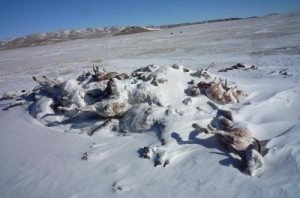
In the winter of 2010, herders in central mongolia faced an animal famine crisis within the slow moving disaster of desertification. That winter about 8.5 million herd animals, goats, sheep, and cattle froze to death in up to -58 degree fahrenheit temperatures. The animals are a crucial food source as well as frequently the sole wealth and economic engine for herders in the region. As in the Minamisanriku tsunami and nuclear disaster in the Spring of 2011, this crisis is a hybrid of natural and man made origins.
Desertification is the process of the degredation of plant life on the steppe, the grassland plain that provides the nutrition for herd animals. A combination of climactic change, overgrazing, and deforestation is gradually pushing the Gobi desert into the homeland of nomadic herders. A dry summer and cold wet winter in 2010 tipped the fragile ecosystem into disaster. Without proper nutrition and hydration, the animals entered the brutal winters on the steppe without the fat and strength to survive the 8 month winter.
The Mongolians have a term “dzud” which refers to the combination of summer drought and severe winter that hardens snow and ice into an impenetrable layer and makes it impossible for livestock to feed. Like the Japanese, Mongolians know the particular risks of the region in which they live, and yet this isn’t sufficient to prevent the economic activity of grazing (in Japan, fishing) that makes them prone to disaster. In Mongolia the economic growth that came out of independence from the Soviet Union precipitated the 40% growth in livestock that precipitated the crisis. As in Japan, the risk is as high as ever that another round of dry summer and wet winter will initiate another crisis of potentially even greater magnitude.
Below is the NRL response to the 29 December 2009 Boston Globe article entitled “Potent Fuel at MIT Reactor Makes Uneasy Politics” by Bryan Bender of the Globe Washington DC office.
Certain basic facts were available to the Globe prior to publication of the article, but did not appear clearly in the article.
One premise of the article was that the MIT Reactor (MITR) could be converted immediately to low-enriched uranium (LEU) fuel if only MIT were willing to accept a small (~10%) decrease in the reactor’s performance. While this statement is true for many low-power university reactors, it is not true for the MITR. Also comments in the article on the security of our fuel inventory are highly misleading. In particular, the following should be noted:
1. The MITR has a very compact core, as do several of the other high performance research reactors including the ones at Missouri-Columbia, NIST, and at Oak Ridge National Laboratory. These reactors can NOT attain criticality using the LEU fuel that has been developed by the Department of Energy (DOE). It is not a question of accepting a small decrement in performance. Conversion with the existing LEU would mean that the MITR could no longer operate. The existing LEU has a density of 4.8 grams/cc. For the MITR to maintain criticality and a reasonable fuel cycle, a density of about 14 grams/cc is required. DOE has candidate fuels that will achieve this density under development. However, efficacy has yet to be shown — tests of the material’s properties are still underway at the Advanced Test Reactor in Idaho.
2. MIT is committed to convert to LEU and has been so committed in writing with the Nuclear Regulatory Commission since the mid 1980s when the LEU conversion effort was initiated in the U.S. We have not, as the article stated, blocked or delayed the program. We have pointed out the need for a high-density LEU fuel that would enable all the high performance reactors to maintain criticality. Conversion planning is currently a major activity at the MIT Nuclear Reactor Laboratory, but again it hinges on the DOE development of a suitable fuel, followed by NRC certification. We strongly concur with current plans to implement the new fuel in 2014.
3. Our existing highly-enriched uranium (HEU) fuel is safe from diversion. The MITR has always had excellent security and is constantly evaluating and upgrading security. Fresh fuel is brought in the day of a planned refueling under enhanced security, and immediately placed in the reactor core for irradiation. Thus, there is almost never any fresh fuel on site, and it is limited to much less than the amount needed to make a weapon. As regards irradiated fuel, it is highly radioactive. NRC defines fuel to be “self-protecting” in the sense that it is sufficiently radioactive so that anyone stealing it would suffer serious health consequences if it exceeds 100 rads per hour at one meter. One can debate the adequacy of this level. For someone who does not value their life, it is not a deterrent. However, MITR fuel greatly exceeds this level and would cause serious, often debilitating, illness and/or death if anyone were to remove it without massive shields that could not be concealed.
